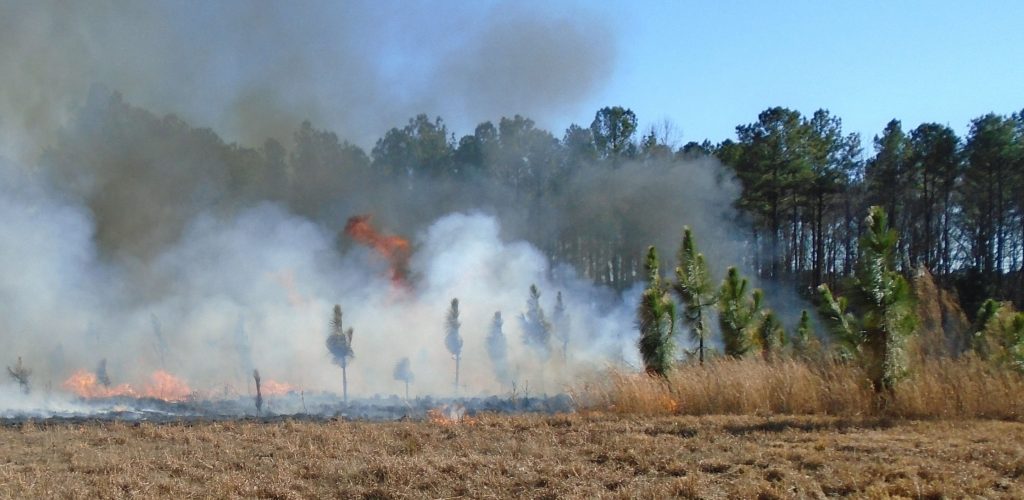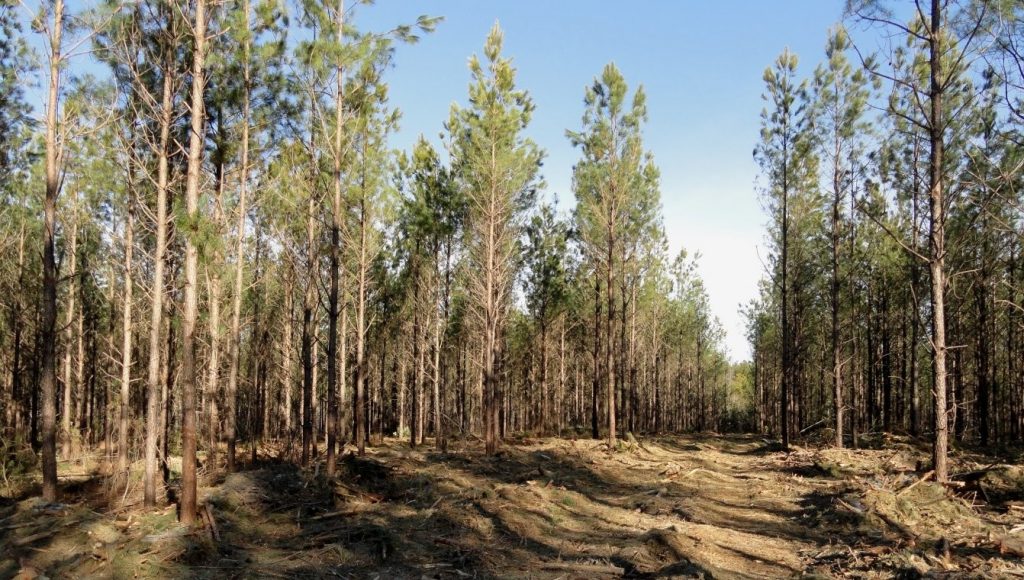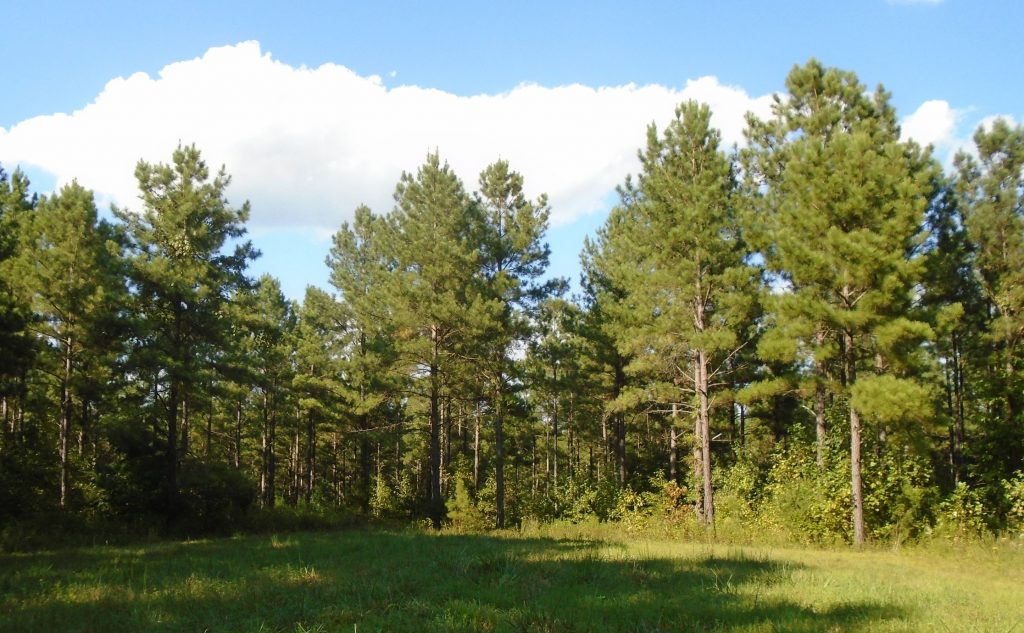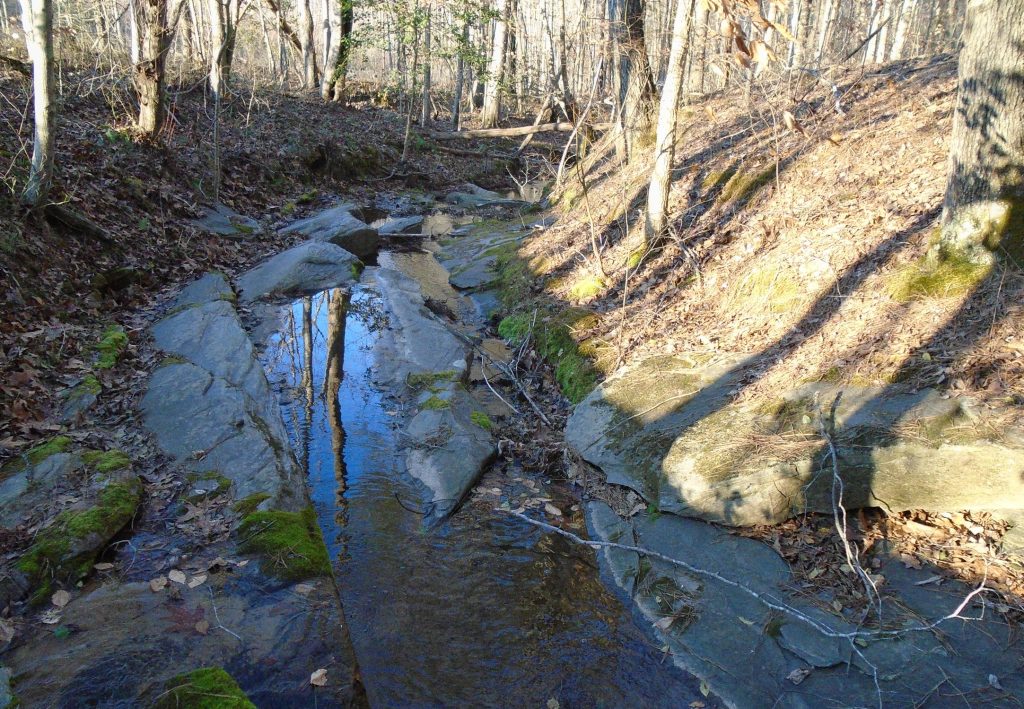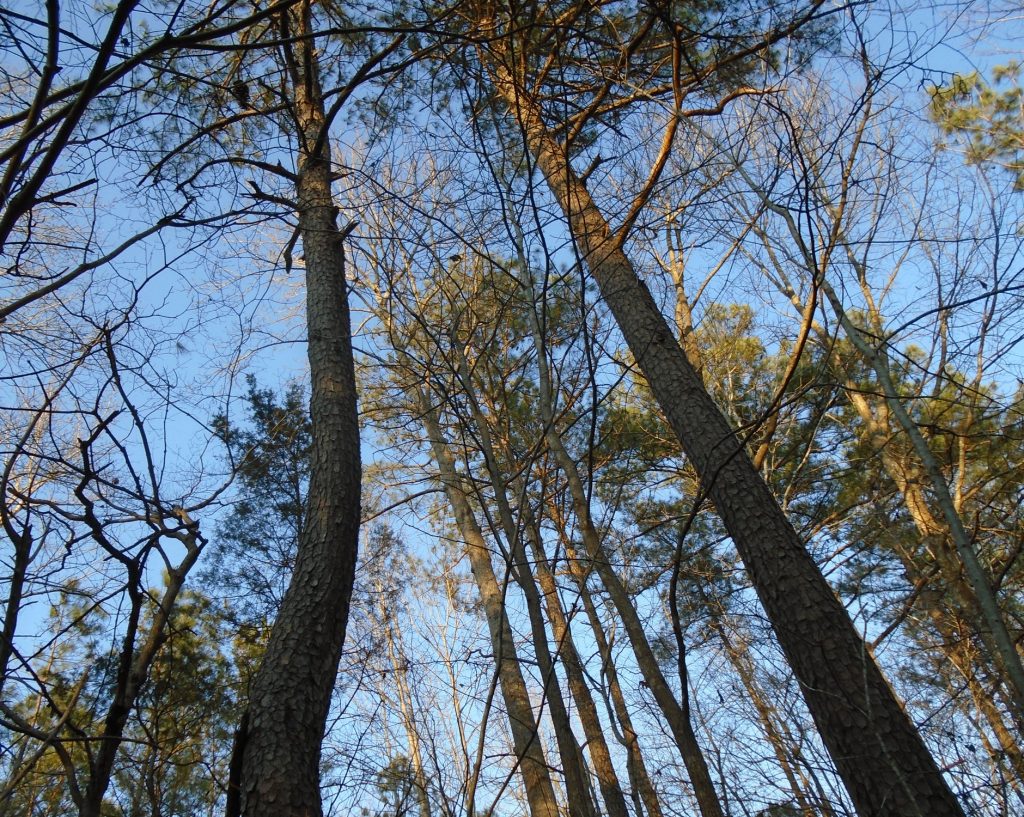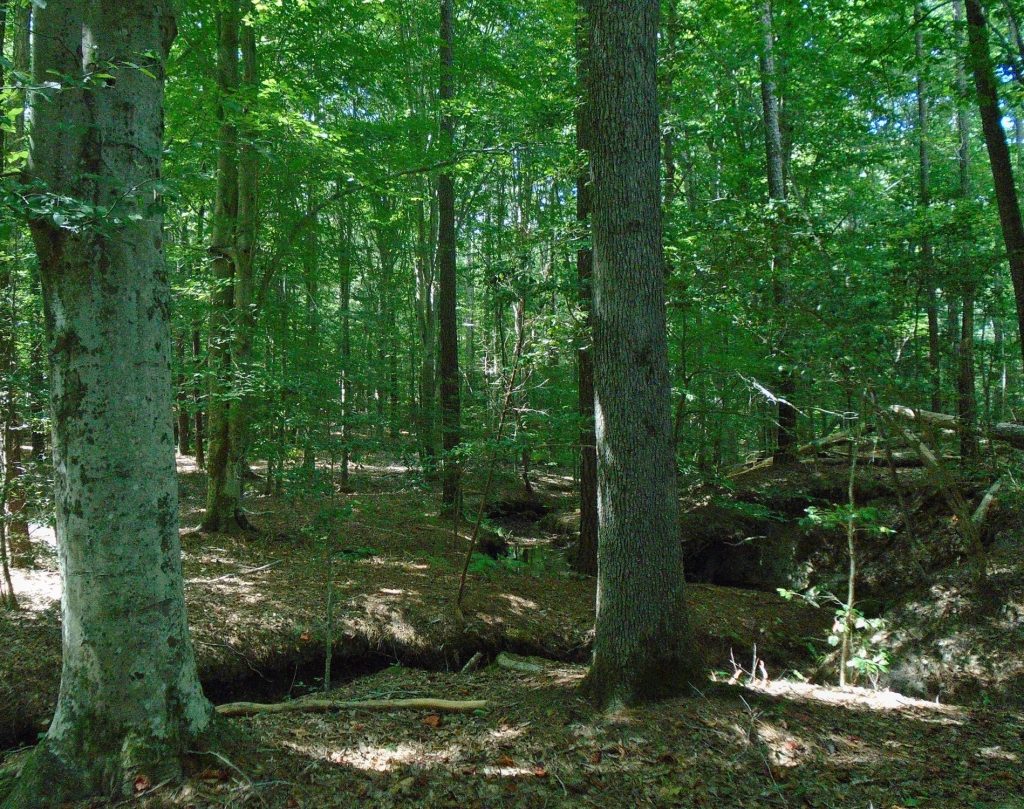I was talking to a couple people about building with wood. They acknowledged wood’s advantages, but asked if we would run out of wood. I told the unequivocally that we will NOT run out of timber in America. The United States is the world’s biggest wood producer, yet we have more wood growing today than in any other time in more than a century. I am not sure they believed me. I can mention statistics, but my certainty comes from my own observations. And I thought that I might be more persuasive if I shared that experience. Fortunately, I have photos. All the pictures are those I took of my own land, so I am confident in their veracity.
Above is a clearcut a few months after the loggers are gone. It looks very desolate, doesn’t it? Below is a few months later. Nature is reslient.
Let’s start with cutover land, i.e. land right after a clear cut. A clear cut must be done if you want to grow sun-loving trees, like pines. Since we grow pines, we do clear cut. If we were growing maples, we would cut selectively. If we were growing oaks, we would clear in patches. It all depends on the type of ecology you are working with. When I learned ecology in the 1970s, clear cuts were considered terrible things. They talked about climax forests that were supposed to be normal working toward this one goal. We have since learned that there is no one goal and we understand that MOST forest types are disturbance dependent. We need new forests, middle aged ones and old growth forests. That implies disturbance. The top photo I took on my land exactly one year after it was clear cut. You cannot see them, but there are 21,000 little trees planted there. There will be a young forest in a few years. In the meantime, this acreage provides wonderful habitat for bobwhite quail & deer. And I think it is beautiful.
Within a few years, you can see the little trees popping up through the brush. The picture above shows one of my plantations of longleaf pine. They are six-years old, which means that this is a clear cut after seven years. They soon will be be entering a stage of very rapid growth. On a side note, longleaf pine requires – REQUIRES – fire. Fire can be very destructive, but it is also part of the ecology in many systems. It is a mistake to exclude fire in many places. You can see a photo below of our burning. Don’t worry. It’s all good. I started the fire and I would not do it if I though it would destroy those trees I love. The longleaf ecology is the most diverse in North America because of the under story and the variety of plants on the ground, all of it enabled by regular fire.
In about fifteen years, loblolly pine in southern Virginia will be ready to thin. We MUST thin the trees to allow proper growth and avoid pests. It is like thinning flowers in a garden. If they are too close together, none of them grow right. The photo above shows fifteen-year-old pines thinned a couple weeks before. We removed 2/3 of the of the trees, which became pulp to make cardboard. Follow this link to see where they went. Below is what they look liked like five years later. There are fewer much healthier trees and more total growing wood than there would have been had we not thinned. These trees are twenty-years-old. We will soon thin them a second time, removing about half the total number of trees. Five years after that, there will be as much total standing timber, maybe a little more, since the thinning will allow the trees to grow that much faster and stronger. Healthy forest require thinning.
Below here are loblolly pines thirty-years-old. You notice that they are bigger than the twenty-year-old trees, but not that much. Trees continue to grow their entire lives, but they start to grow a lot more slowly after they are mature. In the case of loblolly pine, the slow a lot after they are thirty and it is almost time to harvest and start over.
One bonus section. One of the criticism of forestry is that we plant mono-culture, i.e. only one sort of tree. This is potentially a problem. We plant a lot of loblolly pine in the South, but we also are planting other sorts of trees. I am restoring longleaf pine on my farms, for example. We also have significant diversity in areas around the streams and wetlands. We protect water by not cutting near streams and lakes. This means that there are a lot of old, mixed forests. Besides protecting water, these zones provide corridors and shelter for wildlife. And they are just beautiful and peaceful places. Below are pictures of our stream management zones. You can see that these are open, mature forests.
And finally, forest owners are usually forest lovers. This is a picture of what I call “Old Virginia” since it features the mix of oak, shortleaf pine and others that made up a typical mixed forest of the past. This will not be harvested. We just enjoy them.
Anyway, will we have enough timber in the future? Yes we will.
Wood is 100% renewable resource. We know how to grow timber sustainably in the U.S. and we are doing it. Wood is the most environmentally benign building material throughout its full life cycle. We should build more with wood.
Posted also on LinkedIn




